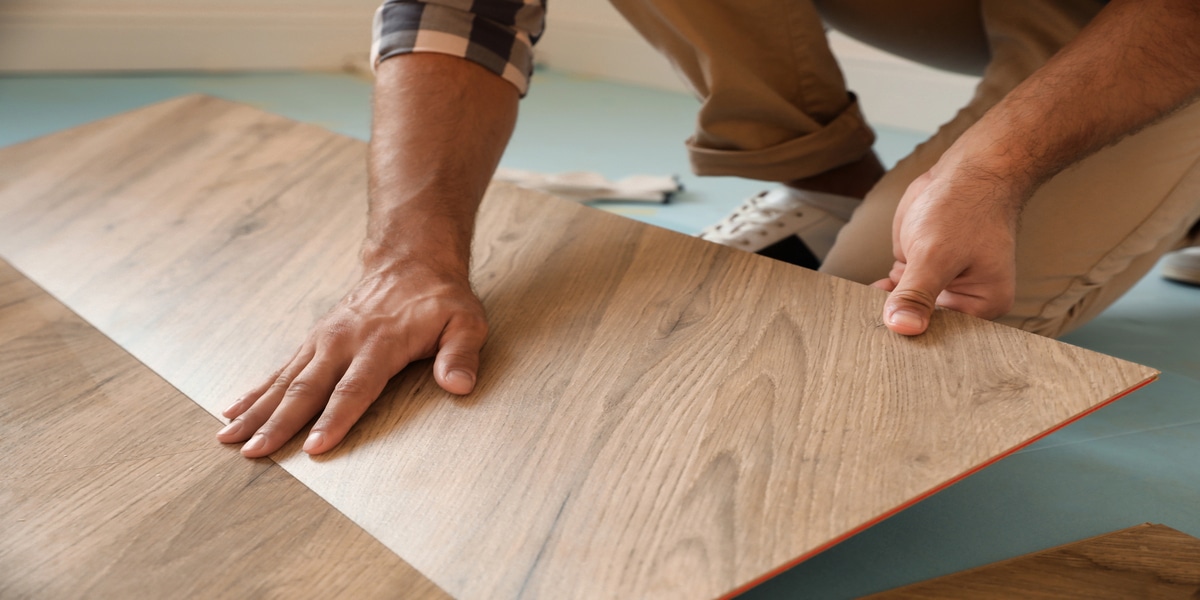Hardwood at Altitude: Acclimation & Moisture Targets for Denver Homes

Installing engineered hardwood in a Denver basement requires special preparation because of the city’s high elevation and dry climate. At one mile above sea level, the reduced air pressure increases evaporation rates, pulling moisture out of the wood faster than at lower elevations. To avoid warping and cracking, engineered hardwood planks should acclimate for 7 to 14 days before installation. Stack the boards with spacers between each layer inside the installation room to let them adjust naturally to the surrounding air.
Moisture control is critical. Denver’s wood moisture content target ranges between 6% and 9%, compared to 10% to 12% at sea level. Accurate measurements using pin-type or pinless moisture meters ensure the boards stabilize before installation begins. Proper subfloor conditions also matter—check for moisture coming up from concrete or crawl spaces and use a vapor barrier to protect the wood from below.
Ventilation plays a major role in maintaining balanced relative humidity. Basements often trap humid air, which can lead to condensation beneath the flooring. Installing vents or using a dehumidifier keeps humidity steady between 30% and 50%, reducing the risk of warping or buckling.
For homeowners deciding between flooring solutions, engineered hardwood outperforms carpet in basements because it resists temperature changes and moisture better. However, choosing the right underlayment and sealing method is essential for long-term performance.
Maintaining stable indoor air conditions year-round helps preserve the beauty and durability of your hardwood investment. By monitoring relative humidity, maintaining proper subfloor conditions, and ensuring consistent ventilation, you can enjoy a smooth, lasting floor surface that withstands Colorado’s dramatic seasonal swings.
Why Altitude and Climate Affect Hardwood Performance
Installing hardwood floors in Denver requires more than standard installation knowledge—it demands a clear understanding of how altitude and climate impact wood behavior. At one mile above sea level, air pressure measures only 83% of what it is at coastal regions. This lower air density changes how moisture moves through materials, especially hardwood flooring. Because wood naturally absorbs and releases moisture, Denver’s thin air accelerates evaporation. This means hardwood planks dry out faster, much like laundry drying quickly on a mountain compared to at sea level.
Colorado’s high-altitude environment produces extreme seasonal humidity changes. Indoor levels often drop below 15% in winter when heating systems remove moisture from the air. During summer, humidity can climb to 40–50%. These fluctuations cause continuous expansion and contraction in wood fibers.
Common results of these humidity swings include:
- Gapping: noticeable spaces between planks when the wood shrinks.
- Cupping: edges of boards curve upward when moisture returns unevenly.
- Structural failure: planks crack, warp, or separate from the subfloor when stress becomes too great.
To prevent these problems, flooring professionals rely on precise acclimation and measurement practices. Using moisture meters calibrated for Denver’s 5,280-foot elevation ensures readings reflect local atmospheric conditions. The target wood moisture content should stay between 6% and 9%, compared to 10% to 12% at lower altitudes.
Proper acclimation time, moisture testing, and humidity control form the foundation of successful installations. Contractors who overlook these factors often create floors that begin failing within just a few years. Understanding how air pressure, humidity, and elevation interact allows homeowners to protect their hardwood investment and enjoy a durable, stable floor surface for decades.
Proper Acclimation Steps for Denver’s Dry Conditions
Proper acclimation is one of the most important steps in ensuring hardwood floors last in Denver’s dry, high-altitude climate. Because the air holds less moisture at one mile above sea level, wood adjusts differently than it would in coastal or humid environments. Allowing hardwood flooring to reach the right balance before installation prevents serious issues like gapping, cracking, and warping.
Hardwood flooring typically needs 7–14 days to acclimate in Denver, though certain rooms may require more time depending on temperature and airflow. During this period, store the planks in the exact room where they will be installed. Keep your heating and cooling system running at normal living conditions to maintain consistent temperature and humidity.
Follow these key acclimation steps:
- Remove the hardwood from its packaging and stack boards with spacers between each layer so air can circulate freely.
- Use a wood moisture meter daily to measure readings from several boards across different boxes for accuracy.
- The hardwood moisture content should stabilize between 6% and 9% for Denver’s dry environment.
- The subfloor moisture should be within 2 percentage points of the flooring material to prevent separation or swelling after installation.
- Avoid using dehumidifiers during acclimation since Denver’s air is already dry enough. Forcing moisture out too quickly can damage the wood’s cellular structure.
- Keep written moisture logs that include dates, readings, and testing locations. These records serve as proof of proper installation practices and protect your warranty.
Understanding equilibrium moisture content (EMC) is crucial for success. EMC is the balance point where the wood neither gains nor loses moisture from the surrounding air. At Denver’s 5,280-foot elevation, this balance occurs at lower moisture levels than in most regions. Taking time to reach this balance ensures your hardwood flooring performs beautifully for years without structural or surface damage.
Understanding Moisture Content & Monitoring Tools
Visual inspection alone cannot determine if hardwood flooring has reached proper moisture balance. Accurate readings come from specialized tools—pin-type and pinless moisture meters—which give precise data needed for successful installations in Denver’s dry, high-altitude environment. Pin-type meters work by measuring electrical resistance between two small metal probes inserted into the wood. This method checks internal moisture at specific depths within the plank. Pinless meters, on the other hand, use electromagnetic sensors to scan wider surface areas without puncturing or leaving marks on the wood.
In Denver’s mountain climate, hardwood flooring must reach a moisture content between 6% and 9%. This lower range prevents excessive expansion and contraction once the wood is installed. At lower elevations or in humid coastal regions, installers aim for 10–13%, but using those higher standards in Denver’s thin, dry air would cause serious flooring issues like warping and gapping. Daily testing during the acclimation period helps track how the wood adjusts to the building’s interior temperature and humidity. These readings show when the material has stabilized and is safe to install.
Professional-grade moisture meters come with calibration settings for specific wood species, including red oak, white oak, maple, hickory, and Brazilian cherry. These settings account for the density and cellular structure differences that affect how each wood type absorbs and releases moisture. Installers should take readings not just from the hardwood boards but also from the subfloor, walls, and ambient air inside the space.
Documenting every reading throughout the acclimation process builds a complete moisture profile for the job site. This data protects both contractors and homeowners by proving the flooring was installed under proper environmental conditions. It also prevents warranty disputes and reduces the risk of common moisture-related problems like cupping, crowning, or buckling once the floors are in place.
Professional Installation Practices for Lasting Results
Checking moisture levels before installation lays the foundation for durable hardwood floors that can withstand Denver’s unique climate. Professional installers strictly follow manufacturer guidelines covering expansion gaps, nail spacing, and subfloor preparation. They ensure that floors are level within 3/16 inch across 10 feet, correcting any uneven areas beyond that limit. This step prevents stress points that lead to squeaking or board movement after installation.
Acclimation plays a critical role in helping wood planks adjust to indoor temperature and humidity before they are secured in place. During layout planning, installers consider plank length, grain direction, and how boards will align visually across the room. These decisions minimize gaps and ensure a uniform appearance as the wood naturally expands and contracts throughout the year. Nail guns are calibrated for proper air pressure so that fasteners are driven at consistent depths, preventing loose boards or surface damage. The National Wood Flooring Association (NWFA) provides detailed standards on nail frequency and placement that guide these best practices.
Boards are typically installed at right angles to the floor joists, reinforcing structural stability and distributing load evenly across the subfloor. Transition strips between adjoining rooms or flooring types help absorb seasonal wood movement without cracking or buckling. Denver’s elevation of 5,280 feet adds another layer of complexity, as low humidity and dramatic temperature shifts amplify any installation errors.
Certified hardwood flooring professionals understand both national industry standards and the effects of Denver’s dry air on wood materials. Their combination of precision, experience, and climate-specific knowledge ensures that every installation performs reliably through seasonal changes, maintaining its strength and beauty for years to come.


















